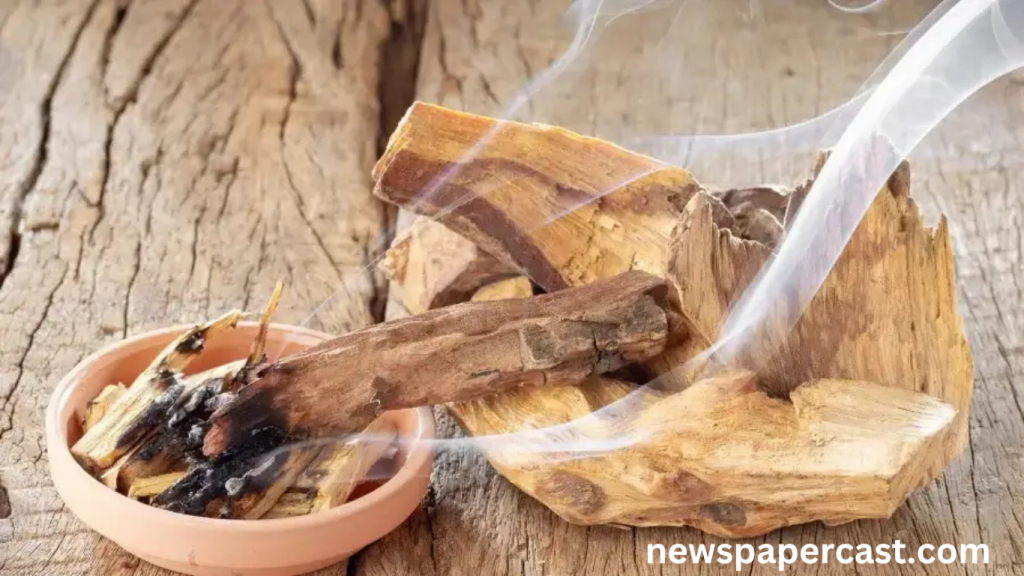Palo Santo, meaning “Holy Wood” in Spanish, originates from South America. Primarily, it grows in countries like Ecuador, Peru, and parts of Brazil. The tree, scientifically known as Bursera graveolens, thrives in tropical dry forests. Indigenous communities have harvested it for generations, using only naturally fallen branches and aged wood to respect the tree’s sacred nature.
Cultural and Spiritual Significance
For centuries, Palo Santo has held deep spiritual value among indigenous tribes. Shamans and healers in the Andes and Amazonian regions have used it during rituals and ceremonies. It’s believed to cleanse energy, ward off negative spirits, and attract positive vibes. The smoke plays a central role in sacred gatherings, often used to purify spaces and individuals before spiritual work.
Traditional Medicinal Uses
Beyond spirituality, Palo Santo has also been part of traditional medicine. The wood and its essential oil have been used to treat headaches, colds, anxiety, and inflammation. Healers often apply its oil for its soothing effects or burn small sticks to promote emotional balance and mental clarity.
Read More : Expired Vitamins are Okay, and 4 Other Things You Didn’t Know About Nutrients
Aromatherapy and Essential Oil Extraction
Modern wellness practices embrace Palo Santo through aromatherapy. The wood is distilled to extract essential oils, known for their calming, citrusy aroma with earthy undertones. These oils find their way into diffusers, massage blends, and even skincare products. The scent helps reduce stress, improve mood, and promote better sleep.
Sustainability and Ethical Harvesting
Responsible sourcing is crucial to the Palo Santo trade. Overharvesting and illegal logging have endangered some local populations. Authentic Palo Santo comes from naturally fallen trees and branches, often aged for several years to enhance the aromatic resin. Ethical brands and indigenous cooperatives now lead efforts to ensure sustainable harvesting while supporting local economies.
Everyday Uses in Modern Life
Today, Palo Santo is found in homes, yoga studios, and wellness centers worldwide. People burn it during meditation, clean their homes with its incense, and use its oil for personal rituals. It’s become a symbol of mindfulness, offering a natural way to create calm, sacred spaces in daily life.
Differences From Other Sacred Woods
Palo Santo is often compared to white sage and sandalwood, but each has unique properties. While white sage offers a sharper, cleansing scent, Palo Santo delivers a sweeter, softer aroma. Its smoke is less intense, making it suitable for frequent use without overwhelming the senses. Its versatility and spiritual history give it a distinct place in the world of natural wellness.
Frequently Asked Questions
What does Palo Santo smell like?
Palo Santo has a rich, woody aroma with hints of citrus, mint, and subtle sweetness, often described as calming.
Can anyone use Palo Santo for spiritual practices?
Yes, while it holds cultural roots, Palo Santo is used globally by individuals seeking peace, clarity, or energetic cleansing.
Is burning Palo Santo safe indoors?
Yes, burning small amounts in a well-ventilated space is generally safe, but avoid overexposure to smoke.
How often should Palo Santo be used?
Usage depends on personal preference. Many people use it during meditation, weekly rituals, or when needing a reset.
Where can I buy ethically sourced Palo Santo?
Ethical Palo Santo is available from trusted herbal shops, wellness stores, or direct from certified South American cooperatives.
Does Palo Santo expire or lose its scent?
If stored properly in a dry, cool space, Palo Santo retains its aroma for years without spoiling or losing potency.
Can Palo Santo be used alongside other spiritual tools?
Absolutely. It pairs well with crystals, sage, incense, and sound healing for a more enriched spiritual practice.
Is Palo Santo the same as sage?
No, they differ in plant species, cultural origins, scent, and energetic properties, though both are used for cleansing.
Conclusion
Palo Santo is more than just fragrant wood—it’s a cultural symbol, a spiritual ally, and a wellness enhancer. Rooted in ancient traditions, it bridges the past and present with its healing scent and meaningful uses. Whether burned for clarity or blended into oils for relaxation, its influence continues to grow. Choose ethically sourced products to honor the land and the traditions it comes from.

